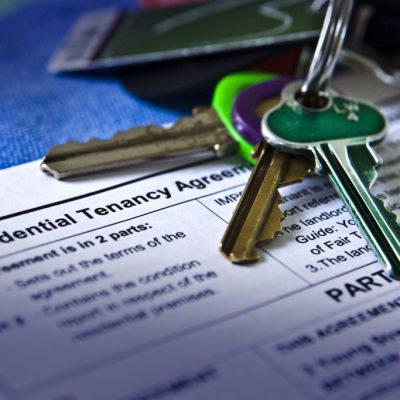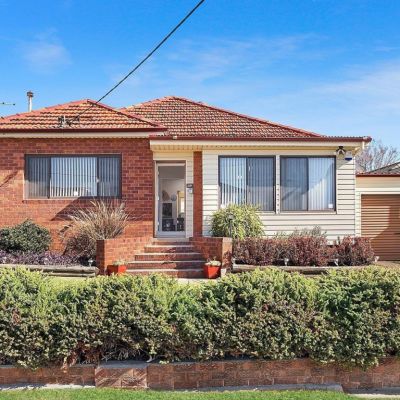How to end a lease early: state by state rules for breaking a fixed-term lease

Terminating a fixed-term lease can be a costly decision, but whatever your reasons for doing so, experts say the number one rule is to give plenty of notice of your intention to vacate.
The first step is to put in writing your plans to break your lease as soon as possible to help minimise disruption between the old and new tenant, according to Stone Real Estate ACT property management director Amanda Tehle.
“Gone are the days when you had to try to find someone to take your place,” she said. “It’s still important for agents out there to try to find the best possible tenant for their owners too. That’s what we are here for.”
In almost every Australian state other than New South Wales, the typical penalty for tenants breaking a lease was to reimburse their landlord for any expenses incurred as a result of the break lease, including any loss of rent, Raine and Horne property management national manager Maria Milillo said.
“It’s pretty much that way in every state apart from New South Wales,” she said. “They’re the only state where the determination of the amount of money you pay is fixed. So, if you have, for example, 75 per cent of your lease still pending then you must pay four weeks rent.”
However, Ms Milillo said her advice would always be that a tenant checks their lease agreement, as well as the governing body websites for information because the length and terms of leases in some states could vary.
Readvertising the property for rent was a common cost for tenants choosing to vacate early, as well as a letting fee, which could be between one to two weeks rent.
“For anyone facing financial hardship, they should make sure they’ve researched and are completely aware of all the support that’s available first before they go down this road because it could be quite costly,” Ms Milillo said.
“Depending on the financial position of the landlord, some are able to be fairly generous and really support tenants but not every landlord is in that position, as they too could be affected financially. So, that’s why communication is really key.”
Belle Property head of property management and escapes Melinda Cotton recommends tenants carefully assess their situation before signing any lease to avoid being in a situation where they need to break the lease.
“Before signing any lease, tenants should assess if they could still afford the rent if they found themselves in financial distress such as through loss of employment, and allow for enough wriggle room to avoid having to break a lease early for financial reasons,” she said.
Tips for terminating a lease
- Put the notice in writing (email is acceptable)
- Include the full address of the property
- Include details for the reasons for terminating the lease (particularly if related to specific grounds for termination detailed in the rental agreement or state rules)
- Include the date you intend to vacate the property and a statement that the lease will end on that date
- Give the landlord as much notice as possible, ensuring the notice period is adequate according to rules in your state
- Request confirmation from the landlord or agent that the notice has been received
State by state guide to breaking a lease
Australian Capital Territory
Tenants in the first half of a tenancy agreement will incur a maximum fee of six week’s rent, and if the agreement is in the second half, it’s a maximum of four week’s rent.
“The penalty though, can be shortened if we find a tenant in, say, week three of that six week period. You would only pay up to the day prior to the new tenant starting,” said Ms Tehle.
If a new tenant moves in during that period, landlords may charge administrative costs, such as advertising fees, from the vacating tenant up to a maximum of one week’s rent.
In certain circumstances, such as financial hardship, where a court has made a protection order, where a tenant has accepted a social housing or aged-care place, or where a tenant has been posted away from Canberra for work, tenants may terminate leases without paying compensation.
Minimum notice periods depend on the reason for terminating the fixed agreement.
- For more information, visit the ACAT website, or read The Renting Book, the guide to rental laws in the ACT.
New South Wales
For leases entered into on or after March 23, 2020, break fees are regulated and based on the stage of the agreement. The set fee payable is:
- four week’s rent if less than 25 per cent of the agreement has expired
- three week’s rent if 25 per cent or more but less than 50 per cent of the agreement has expired
- two week’s rent if 50 per cent or more but less than 75 per cent of the agreement has expired
- one week’s rent if 75 per cent or more of the agreement has expired.
For leases entered into before 23 March 2020, tenants should check whether the optional break fee clause was included in their agreement, in which case a penalty of six weeks rent will apply if the tenant leaves in the first half of their fixed period, or four weeks if in the second half.
In certain circumstances, such as hardship, domestic violence or moving into social housing or aged care, tenants can break a fixed-term agreement without penalty by providing 14 days notice.
- For more information, visit the Fair Trading website where you can view a sample termination notice, or get in touch with the Tenants’ Union of NSW.
Western Australia
Tenants who terminate a fixed lease early may have to pay rent or other reasonable costs (such as advertising) incurred by the landlord until a new tenant is found or the original tenancy period expires.
Tenants affected by family violence may terminate a tenancy agreement with seven day’s notice.
Fixed leases can also be ended by mutual agreement without penalty or the need to issue notices. Both the landlord and tenant need to agree, in writing, that the tenancy agreement should end on a specified date, and both parties must sign a clear, written statement to this effect.
- For more information, visit the Consumer Protection website.
Tasmania
Tenants may end a lease if the owner has not done something the lease says they must, has done something the lease says they must not do, or has not done repairs within the required timeframe, by giving the landlord or agent 14 days notice.
If a tenant breaks a lease before the end date without proper reasons or a notice to terminate, they are responsible for paying rent until a new lease starts or until the end date of the lease, whichever happens first.
The owner must make reasonable attempts to try to find a new tenant, and the tenant will have to pay any advertising costs charged to the owner.
- For more information, visit the Consumer, Building and Occupational Services website.
Northern Territory
Tenants who break a fixed-term lease will be liable to pay the loss of rent for the remainder of the lease or until the property is relet, and may also have to pay fees such as advertising costs to the real estate agent.
Tenants should give landlords or agents as much notice as possible to arrange a new tenant before their departure date.
- For more information visit the Northern Territory government website.
Victoria
Tenants don’t have to pay a penalty for breaking a lease, but they do have to cover costs such as re-advertising the property, and if the property is rented through an agent, a reletting fee.
A rental agreement may include fees for breaking the agreement. If there are fees listed, the agreement must indicate the reason for the fees.
Tenants experiencing severe hardship can apply to VCAT to break a lease without paying fees.
- For more information, visit the Consumer Affairs website or the Tenants Victoria website.
South Australia
Tenants who break a fixed-term lease are responsible for costs related to reletting the property.
Landlords can claim loss of rent until the property is relet, advertising and reletting fees charged to the landlord by an agent.
Formulas developed by the South Australian Civil and Administrative Tribunal (SACAT) must be applied to all advertising and reletting costs. If the tenant breaks the lease in the first quarter of their lease term, full costs can be claimed.
If landlords need to reduce rent to relet the property quickly, they can claim the difference from the tenant until the date their lease ends. If the property is relet at a higher rent, the landlord is profiting from the lease break, and tenants can expect the profit to be offset against the landlord’s loss of rent, advertising and reletting fee.
- For more information, visit the South Australia government website.
Queensland
Tenants who break a fixed-term lease may need to compensate the owner or property manager for costs incurred. These include rent until a new tenant is found or until the end date of the agreement, as well as reasonable reletting costs (usually one week’s rent plus GST) and advertising costs. Owners and property managers must mitigate any losses.
Tenants experiencing excessive hardship may make an urgent application to QCAT for an order terminating the agreement, however, QCAT may still order compensation to be paid.
- For more information visit the Queensland Residential Tenancies Authority website.
We recommend
States
Capital Cities
Capital Cities - Rentals
Popular Areas
Allhomes
More
- © 2025, CoStar Group Inc.










